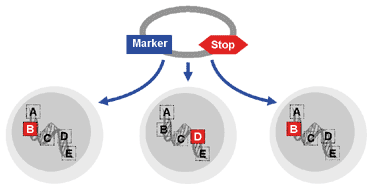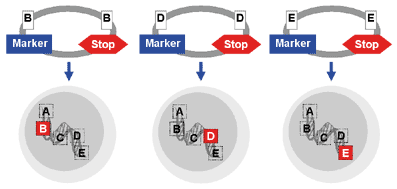NorCOMM Technology
Complete coverage of the mouse genome will be accomplished using a combination of gene trap random mutagenesis and systematic high-throughput targeting of remaining untrapped genes.
Each of NorCOMM’s gene trap centres uses distinct gene trap vectors to contribute up to18,000 new embryonic stem cell (ESC) gene trap clones to the International Gene Trap Consortium (IGTC) each year. Complementing this approach, NorCOMM will generate approximately 2,000 targeted ESC clones in genes not well represented in the gene trap resource.
Typically mutant clones:
- Will contain a single and defined trapped or targeted gene mutation, typically resulting in a null allele.
- Can be used to create a conditional knock-out allele and/or a reporter allele that together will enable functional and gene expression analysis of any given gene within the context of the intact mouse.
- Will have the capacity to be readily retargeted, allowing restoration of gene function or expression of altered gene products that may, for example, contain common mutations found in human diseases.

Gene Trapping. The same vector is used to disrupt genes at random in embryonic stem cells. The use of different vectors at different centres reduces vector bias and expands the representation of trapped genes as well as increasing the repertoire of trapped alleles. See also the CMHD Gene Trap Primer for more information.

Gene Targeting. Gene-specific vectors are needed to target individual genes of interest. Gene targeting requires careful gene annotation, vector design and vector construction optimized for high-throughput gene targeting.
Adapted from Grimm (2006), Science 312:1862.


